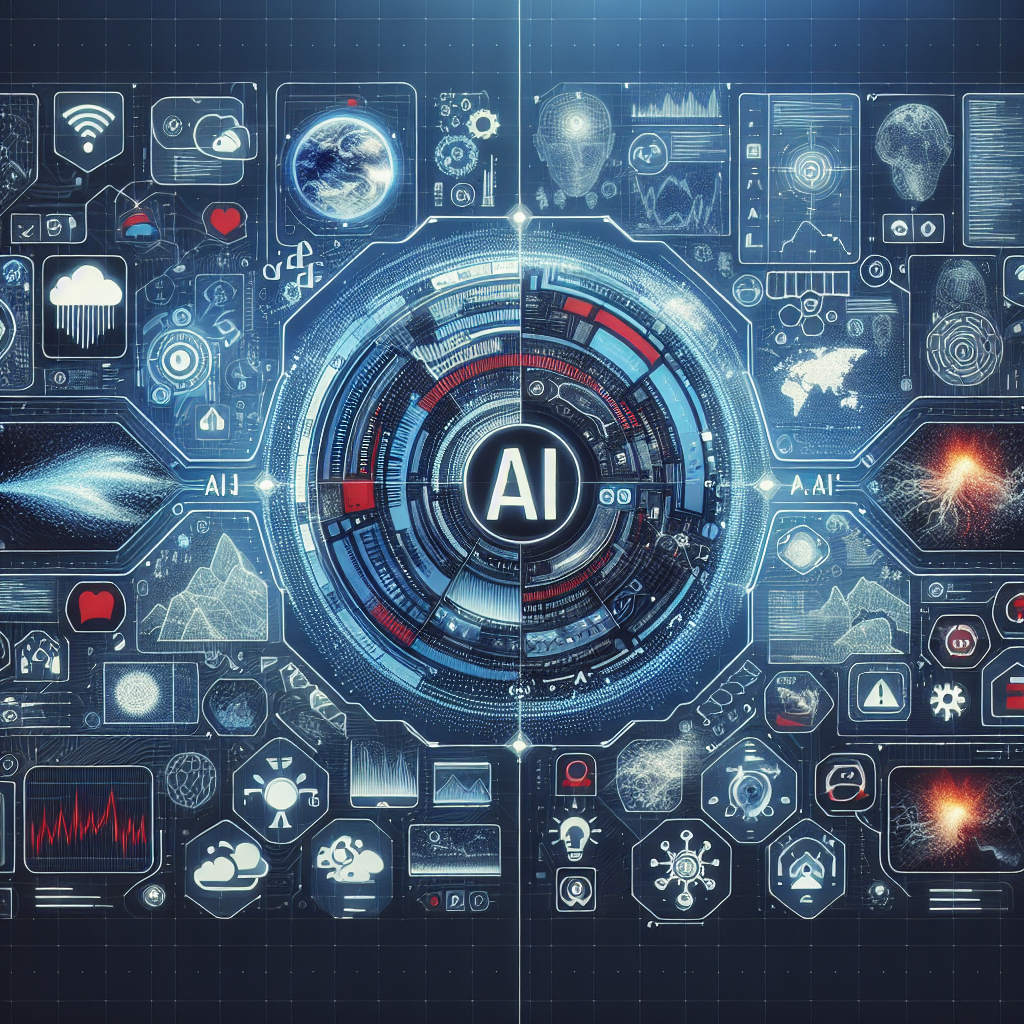In recent years, the world has witnessed an increase in the frequency and severity of natural disasters, such as hurricanes, wildfires, and earthquakes. These disasters have had devastating effects on communities, causing loss of life, displacement of populations, and damage to infrastructure. In the face of these challenges, there is a growing recognition of the importance of disaster preparedness and the role that technology, including artificial intelligence (AI), can play in helping communities better prepare for and respond to disasters.
AI has the potential to revolutionize disaster preparedness and response efforts by providing valuable insights, predicting disaster risks, and optimizing resource allocation. By leveraging AI technologies, designers can create innovative solutions that enhance disaster resilience, mitigate risks, and improve response times. In this article, we will explore the role of AI in designing for disaster preparedness and highlight some of the key applications of AI in this critical area.
AI for Disaster Risk Prediction
One of the key ways AI can be used in disaster preparedness is through prediction and early warning systems. AI algorithms can analyze vast amounts of data from various sources, such as weather patterns, geological data, and social media feeds, to identify potential disaster risks and predict the likelihood of a disaster occurring. By leveraging AI for risk prediction, designers can create early warning systems that provide timely alerts to communities, governments, and emergency responders, allowing them to take proactive measures to mitigate the impact of a disaster.
For example, AI-powered predictive models can help identify areas at high risk of flooding or landslides and recommend preventive measures, such as reinforcing infrastructure or implementing evacuation plans. Additionally, AI can analyze real-time data from sensors and satellites to monitor changes in environmental conditions and provide timely updates on evolving disaster risks. By harnessing the power of AI for disaster risk prediction, designers can develop more effective preparedness strategies and improve the resilience of communities in the face of disasters.
AI for Resource Allocation and Response Optimization
In the aftermath of a disaster, efficient resource allocation is crucial for providing timely assistance to affected populations and minimizing the impact of the disaster. AI can play a key role in optimizing resource allocation by analyzing data on population demographics, infrastructure, and logistics to identify areas in need of assistance and prioritize response efforts. By leveraging AI algorithms, designers can develop decision support systems that recommend optimal resource allocation strategies based on real-time data and predictive analytics.
For example, AI can analyze data on population density, vulnerability, and accessibility to identify the most affected areas and allocate resources, such as food, water, and medical supplies, accordingly. AI-powered optimization algorithms can also help emergency responders plan efficient evacuation routes, allocate transportation resources, and coordinate rescue operations. By using AI for resource allocation and response optimization, designers can improve the effectiveness of disaster response efforts and ensure that critical resources are delivered to those in need in a timely manner.
AI for Designing Resilient Infrastructure
Another key application of AI in disaster preparedness is designing resilient infrastructure that can withstand the impact of disasters and minimize damage. AI technologies, such as machine learning and predictive modeling, can be used to simulate disaster scenarios, analyze structural vulnerabilities, and optimize the design of buildings, bridges, and other infrastructure to enhance resilience. By leveraging AI for infrastructure design, designers can create structures that are better equipped to withstand disasters and protect lives and property.
For example, AI can analyze historical data on building performance during disasters, such as earthquakes or hurricanes, to identify design flaws and recommend improvements. AI-powered simulations can also predict the impact of disasters on infrastructure and optimize design parameters, such as material selection, structural reinforcements, and evacuation routes, to enhance resilience. By integrating AI into the design process, designers can develop infrastructure that is more resilient to disasters and better prepared to withstand future challenges.
FAQs
Q: How can AI help in predicting natural disasters?
A: AI can analyze vast amounts of data from various sources, such as weather patterns, geological data, and social media feeds, to identify potential disaster risks and predict the likelihood of a disaster occurring. By leveraging AI for risk prediction, designers can create early warning systems that provide timely alerts to communities, governments, and emergency responders, allowing them to take proactive measures to mitigate the impact of a disaster.
Q: How can AI optimize resource allocation during disasters?
A: AI algorithms can analyze data on population demographics, infrastructure, and logistics to identify areas in need of assistance and prioritize response efforts. By leveraging AI for resource allocation, designers can develop decision support systems that recommend optimal resource allocation strategies based on real-time data and predictive analytics, improving the effectiveness of disaster response efforts.
Q: How can AI help in designing resilient infrastructure?
A: AI technologies, such as machine learning and predictive modeling, can be used to simulate disaster scenarios, analyze structural vulnerabilities, and optimize the design of buildings, bridges, and other infrastructure to enhance resilience. By leveraging AI for infrastructure design, designers can create structures that are better equipped to withstand disasters and protect lives and property.

